And the city has no need of the sun or of the moon to shine on it, for the glory of God has illumined it, and its lamp is the Lamb. (Revelation 21:23)
Cycles of Life
It’s not easy to begin to piece together the thought processes of a Sumerian scribe when there is no obvious context of any kind and no possibility of reliance – even partial – on pre-existing translations. Fortunately, The Instructions of Shuruppak gave up a couple of its secrets relatively quickly thanks to names also present on the Sumerian King List and a couple of obvious references to the story of Noah’s ark. Retranslation of its 280 lines has reinfused the life blood into a long-lost civilisation and therein lies the precious gift of that extremely ancient text. A faint pulse can now be felt. The Mesopotamian heart has begun pumping once again, and is getting stronger with every new discovery. In that, it can be compared to the reconstruction of some ancient temple; the fallen blocks lifted, dusted off and, one by one, set back into their original slots thanks to their forms and their carved features, slowly but surely coming together to reveal a great building as it was first seen.
Was Hermes Trismegistus, revered by medieval alchemists as author of the Corpus Hermeticum and the enigmatic Emerald Tablet, known before the Hellenistic period or was he the product of later writings as it has been claimed? Was Hermes Trismegistus also Thoth, the wisdom teacher of Ancient Egypt? Did the figure known to us as Jesus of Nazareth take his name from a far earlier Mesopotamian source? Until the past is dug up and the oldest, the least biased, perhaps even the original version of the story repositioned and placed in the bright light of day for all to see, the answers to those questions and many others depend on who you believe. But like flood water behind a leaking dam, truth can only be held back for so long.
Writing these words, my mind strays to the Temple of Dendera and to the Lady Bull, Egyptian Hathor, who resides there. Visiting in January 2019, we came across an ongoing archaeological investigation below the interior floor; pieces of pillars buried under its massive flagstones, apparently re-used from earlier times to support a new or restored building. It appears that Hathor’s home has been rebuilt at least once and likely that the founding slab of it all is far more ancient than we have been given to believe.
The Temple of Dendera carries more than one trace of the passage of time and of foreign visitors. Hathor has been disfigured, her multiple faces smashed as if in rage. Someone climbed very high to do that damage. Unmissable on one of her central pillars, there is a carefully carved Templar cross. And far more discreet, on the steps leading down to the crypt, I noticed a very small but, if memory serves, unmistakeable Christian lamb carrying a banner carved next to the hieroglyphs, similar to the image here above.¹ And so it goes; the old is buried and decomposed, reduced to ashes, or just lies there taking the kicks in stony silence, waiting to be reconstructed or repurposed. Whatever the case, the land is rendered fertile by past cycles of life and, if all goes well, an Egypto-Mesopotamian phoenix will rise again one day soon.
In the meantime, one important theme rediscovered thanks to The Story of Sukurru (aka The Instructions of Shuruppak) is that of mind-altering substances, a subject discussed in my sixth article titled ‘AMA-NITA Mon Amour’ which provides evidence of a Sumerian origin to the name of the mushroom:
https://grahamhancock.com/dainesm5/
I also came across the account of an ecstatic ritual, surely a precursor to the initiation practices of the considerably later Ancient Greek Eleusinian Mysteries. As research into the metaphysical aspect of the texts has taken centre stage in recent months, today I propose to carve another dose of unmistakable truth into the heart of the ancient world.
The Cow and the Basket
The Sumerian cow is easily identified by her beautifully executed profile on a tablet² dated to the earliest period ca.3350-3200 BC which, pierced through at its centre, was perhaps used as a small weaving weight. More than just a pretty picture, she is a short series of interconnected words, to be translated according to the context in which they’re found. Given in the Sumerian dictionaries as ‘via’ and ‘path’ and read as GIR3, the word expresses a journey, a passage of some kind. The origin of this rather lovely profile lies in the tossing of the soul up to the sky on her horns. On one level, it corresponds to the earthly practice of bull leaping, a sport once carried out as part of the ritual passage to adulthood. Lines 45 to 46 of The Story of Sukurru make a clear reference to this. Translated as closely as possible to the original wording, they give:
The male who is weaned a rope around the stone bull man lift, while males unweaned from the cask milk given shall be.
On another level, GIR3 speaks of otherworldly acrobatics. It also serves to explain the importance of the bull in places such as Gobekli Tepe and Çatalhöyük in northern Mesopotamia. And, I suggest, it ties into the Ancient Egyptian cult of the Apis bull, not to mention the Minoan fresco of bull leapers from ca.1300 BC rediscovered on the Greek island of Rhodes. The list of links is long and widespread. Mr and Mrs Bull were world-famous in their time.
GIR3 is shown above another word given on the CDLI website as DUB, the tablet. However, that transliteration is an error. The image is quite obviously that of a basket and should be read GA₂ or MAL. The Sumerian depiction of a woven reed basket is, of course, directly linked to the well-attested ‘man bags’ found in numerous Mesopotamian murals, carried by the so-called Anunnaki gods. In Sumerian dictionaries, the given meanings include ‘basket’, ‘house’, ‘to place’ (presumably inside), and the more enigmatic pronoun ‘I’. In fact, this is the basket in which the word for ‘sky’, eight-pronged star of AN, is sometimes represented. Together they take on another level of meaning; AMA, the ‘mother’ of the AMA-NITA name and the basket can be understood as a celestial vessel.
Thus, the celestial cow (GIR3) and mother (AMA), her vessel and basket (MAL) and the milk (the GA of Gaia) once served to transform existing rituals of psychedelic journeying into words. The tablet of the cow and basket is, I suggest, the Mesopotamian equivalent of many Indus Valley seals in which the basket is replaced by a strange and sometimes orb-covered boat or bowl with a large square mast. For comparison, the example below, kept in the Metropolitan Museum,³ is labelled as a unicorn over an incense burner – fortunately followed by a question mark:
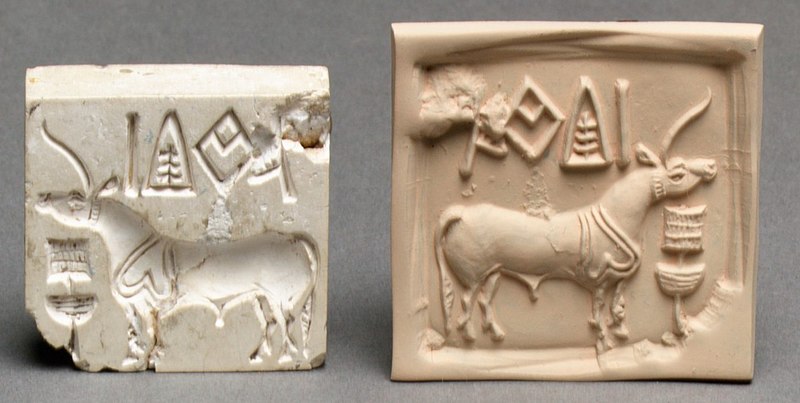
(CC0)
The Cow, the Lamb and the Deer
According to various sources – not least of which Professor Carl Ruck renowned for his work on entheogens in the ancient world – one method of ingesting palatable doses of psilocybin consisted in drinking the urine of deer after the animals had eaten the fly agaric mushroom. The connection between the red-nosed reindeer of Santa Claus flying across the winter sky and an extremely ancient Siberian tradition has been made. With that in mind and with the increasingly firm conviction that the Mesopotamian language holds most if not all of the keys to such mysteries, I went looking for the Sumerian deer. My hope was that it might indicate knowledge of and thus confirm the existence of such a strange procedure. The path of the horn of the celestial cow, which I had already encountered in The Story of Sukurru, came into view and it turned out to be, as so often, an immensely rewarding investigation.
‘Lulim’, written as either GIR3-LU-LIM or just LU-LIM, is given as ‘stag’ and ‘deer’ in orthodox Sumerian dictionaries. Without the context of mind-altering substances, it would be difficult to explain the underlying meanings of ‘seeing the light’, ‘the path to the light’, ‘through the eye of the lamb’ or perhaps ‘the path of the lamb to perceive’. But then again, taking the conventional viewpoint that such words are mere syllables and inherently meaningless, no-one should ever feel the need to make such a connection. Problem solved!
The next step was to look for Lulim the Deer in context. Within the large corpus of Sumerian ‘proverbs’ written in the Old Babylonian style of ca.1900-1600 BC, there exists a very short and therefore highly intriguing riddle comprised of just five words.⁴ Bearing in mind that my understanding is now overwhelmingly influenced by magic mushrooms, here below my interpretation of it:
The humorous inference should be obvious but I will point it out just in case; the nourishing ‘milk’ in question comes not from the animal’s breast but from the urinary tract. This version, with the exception of LU as ‘light’ (one of my few, necessary and fully justified additions), makes use of existing dictionary-given meanings and can be usefully compared to the woefully lacklustre and meaningless academic offering below:
A stag wandering in the outlying areas.
Closer analysis of the pictograms provides additional information:
BAR read as ‘outside’ takes the form of a shepherd’s crook and constitutes part of UR-BAR-RA given as Akkadian ‘urbara’, the ‘wolf’ from which the sheep are protected throughout the long night by their leader’s presence.
DAG translates to ‘trap’, a reference to the trapped deer (how to collect their urine otherwise?), but also has the meaning ‘dwelling’ and in its original pictographic form of the 4th millennium appears to be an image of E₂, ‘house/temple’, placed in the same curve or rather carriage used by UD, the sun, to cross the sky from east to west.
GA, the milk, is an element of GAN, the celestial womb, crucible and Milky Way. With that in mind, the underlying message can be read as follows:
For the vision (LU-LIM) of another world (BAR), on a journey with/to the sun (DAG) be carried by the milk/shamanic brew (GA).
So where else inside the corpus of Sumerian texts might we look for another in-context example of LU-LIM, the stag, and bringer of light? Strangely enough, the name appears on the third line of the antediluvian King List. It sits unnoticed because it has always been written and pronounced Alulim and is given as the name of the first king of the first city:
In Lost Stones Of The Anunnaki (p.252), I propose that Alulim be read ‘the strong wing of light’, and that this is potentially a reference to the first light (ŠI/LIM can also be read as ‘first’), the morning star which is Venus also known as Lucifer, having the meaning ‘bringer of light’ in Latin.
Taking the whole matter a little further today, I contend that the opening lines of the Sumerian King List indicate a time in a far distant past, that of a so-called Pagan culture when the word LU primarily read ‘light’, but perhaps also ‘lamb’, a metaphor for ‘illumination’ in a spiritual and mind-altering initiation context, carried down through the millennia and integrated into the Christian faith. I also suggest that Alulim is the origin of ‘hallucinate’, yet another word that has not been taken further back than a Greek or Latin source, and a word that has long since been stripped of its more profoundly positive sense. Lucifer also…
Here below, a joining of some dots and crossing of some eyes:
For those who might consider my comments regarding the Sumerian King List a step too far in this enhanced version of antediluvian history, let’s take another look at the premise on which it stands: that of an ancient shaman, a leader, shepherd of the flock, drinking and/or providing urine recycled from a mushroom-crazed deer. Does such an idea hold up under scrutiny or is it all just conjecture? Are my now numerous findings grounded in hitherto misunderstood Sumerian writings or are they all merely coincidences?
I recently attended a truly exhilarating exhibition called ‘Treasures of Peru’. One of the exhibits there, an anthropomorphic stirrup spout bottle⁵ from the Moche culture ca.100-800 AD provided the answer to those questions in a manner more eloquent than any words.
Note that the figure is captive, indicated by the cord around its neck and hanging down across its breast. At Lambayeque, also in Peru, a mural depicting a deer caught in a net was discovered in 2007. That site has been carbon dated to ca.2000 BC. What more is there to say? If that’s not an ancient Peruvian psilocybin-tripping deer/monk/shaman, then I’m a monkey’s uncle.
References:
¹ Medieval bas-relief on the wall of the atrium of the St. Euphrasius basilica, Poreč, Croatia (photo Georges Jansoone JoJan, Wikipedia Creative Commons). The Lamb of God, Agnus Dei, is found in the Gospel of John and mentioned numerous times in Revelation.
² Cuneiform Digital Library Initiative (CDLI), ref. P002207, Vorderasiatisches Museum, Berlin, Germany.
³ https://www.metmuseum.org/art/collection/search/324062
⁴ Electronic Text Corpus of Sumerian Literature (ETCSL), Proverbs Collection 6.1.08, seg. B, line 15.
⁵ Museo Larco, Lima, Peru (photo Ian Faure).






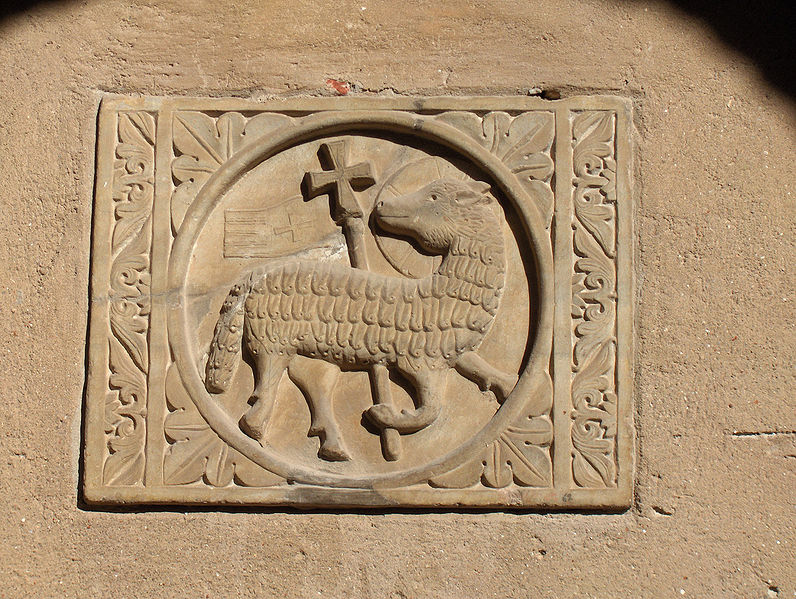
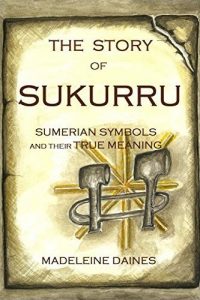
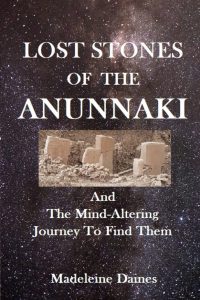


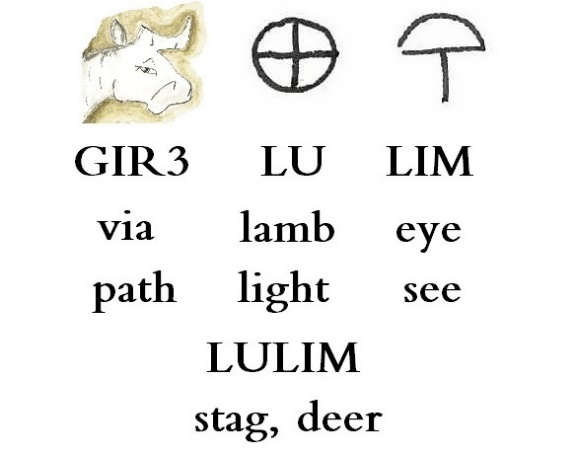


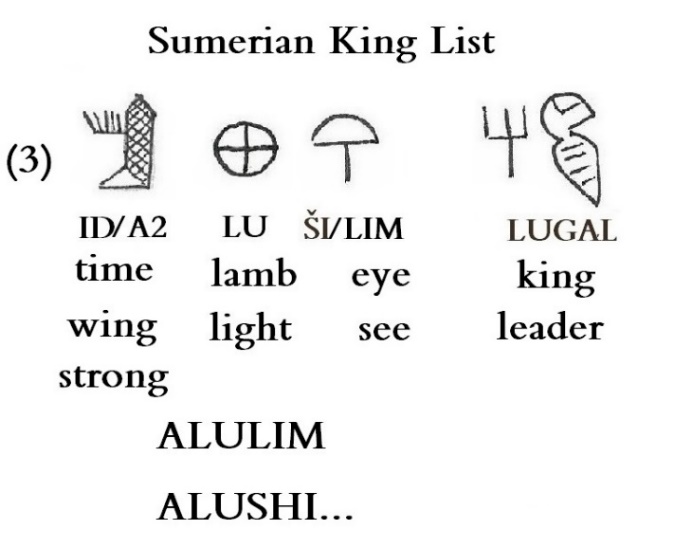

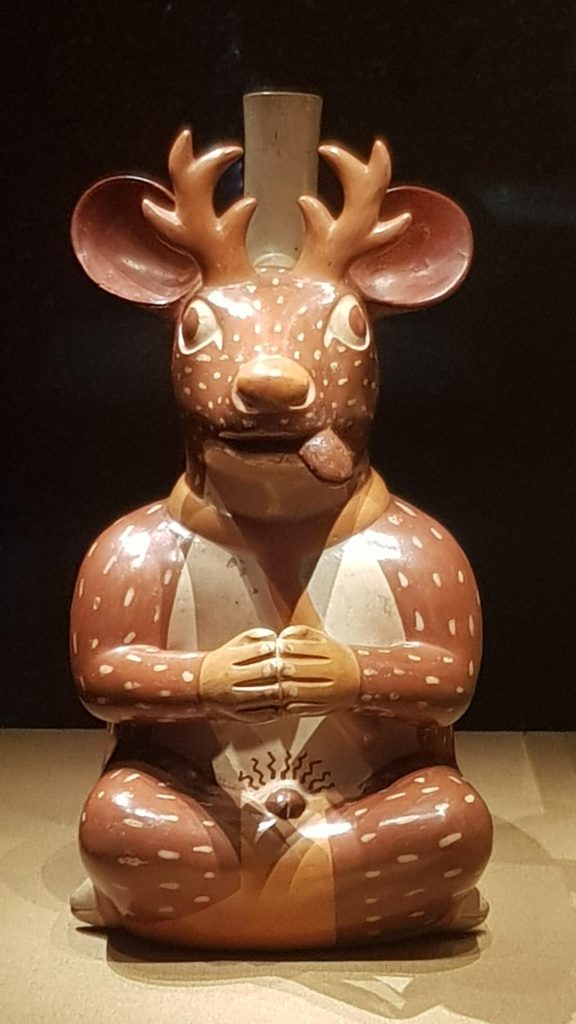
Fascinating, Ms. Daines.
Thank you!